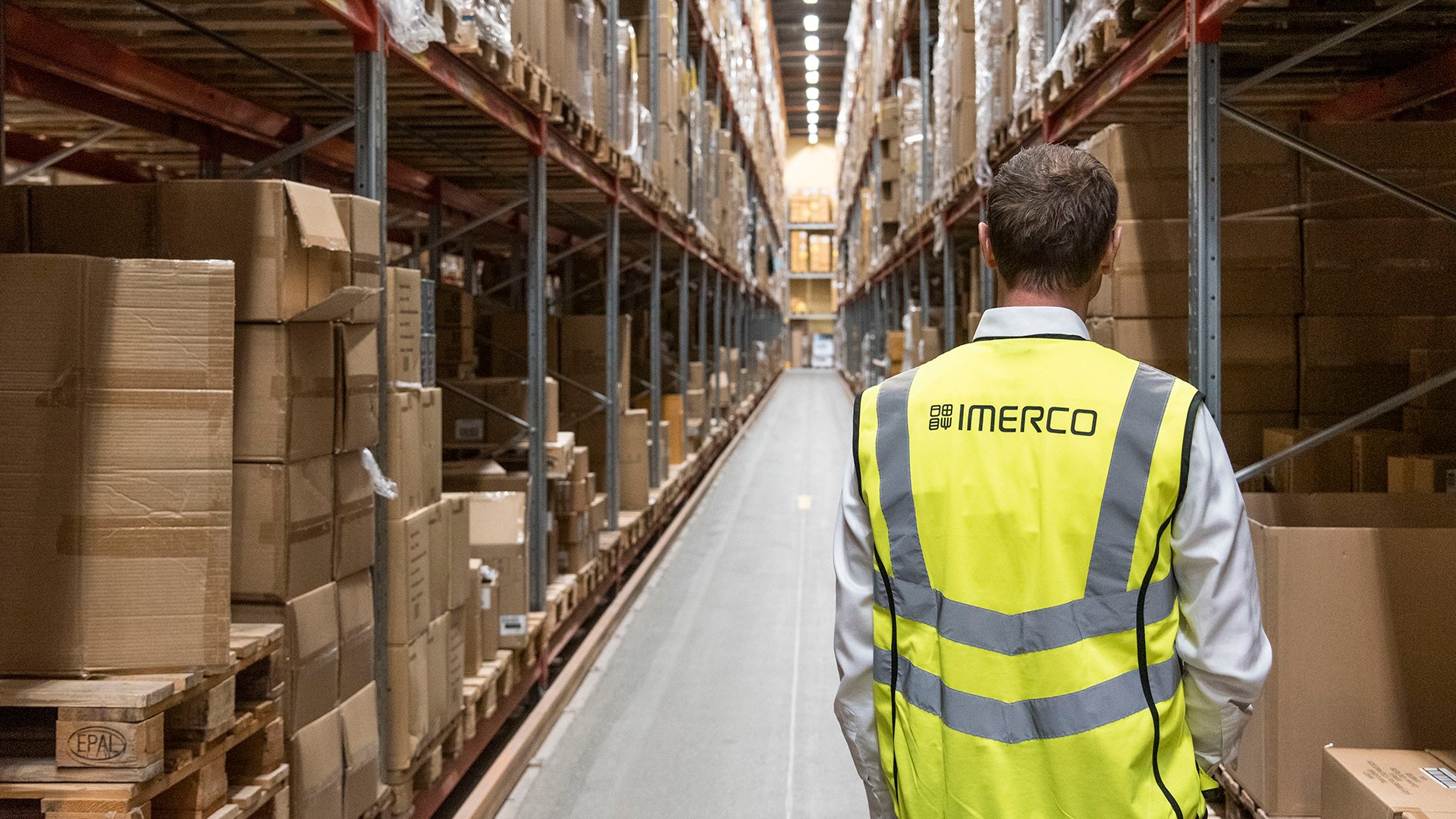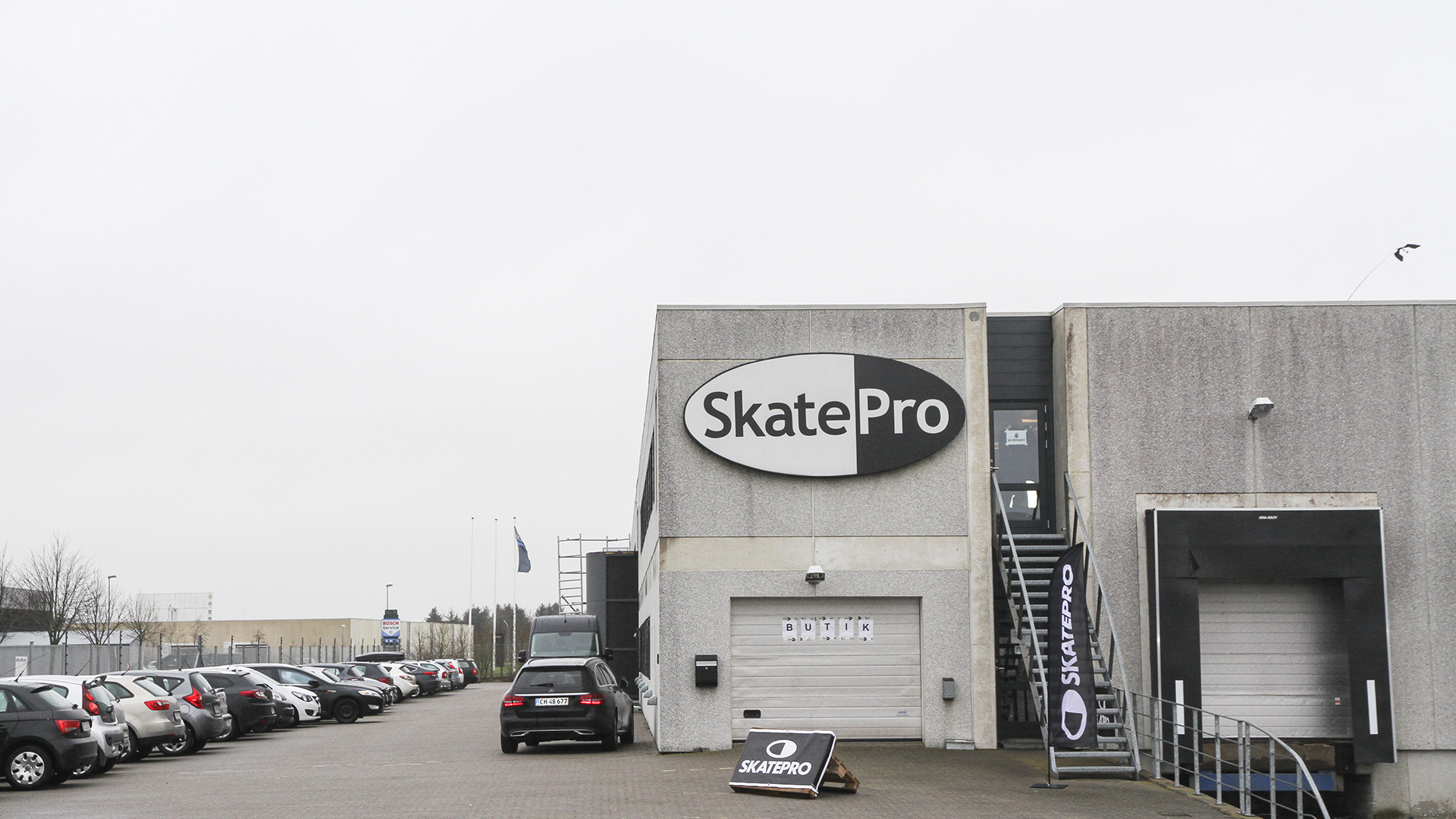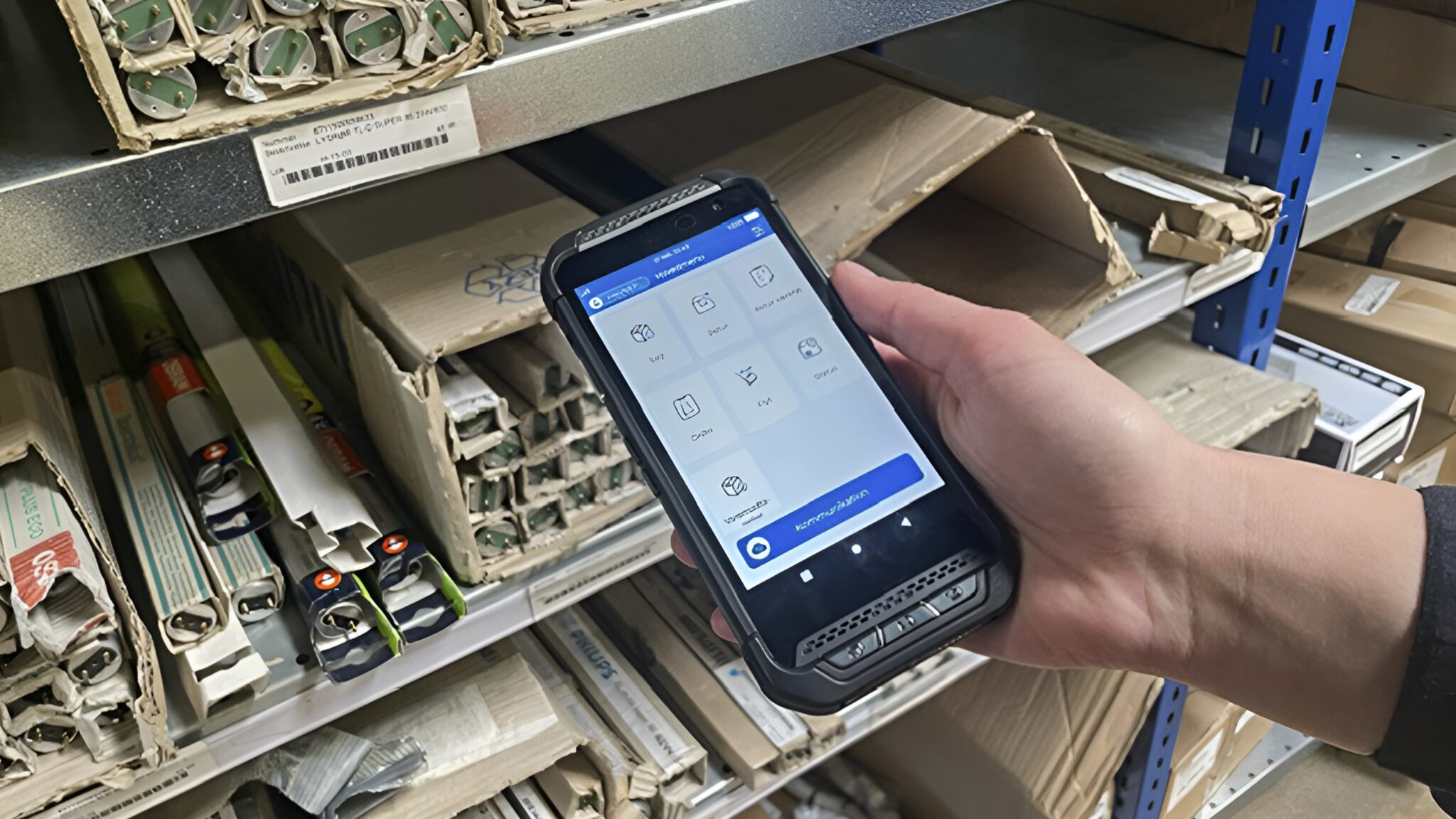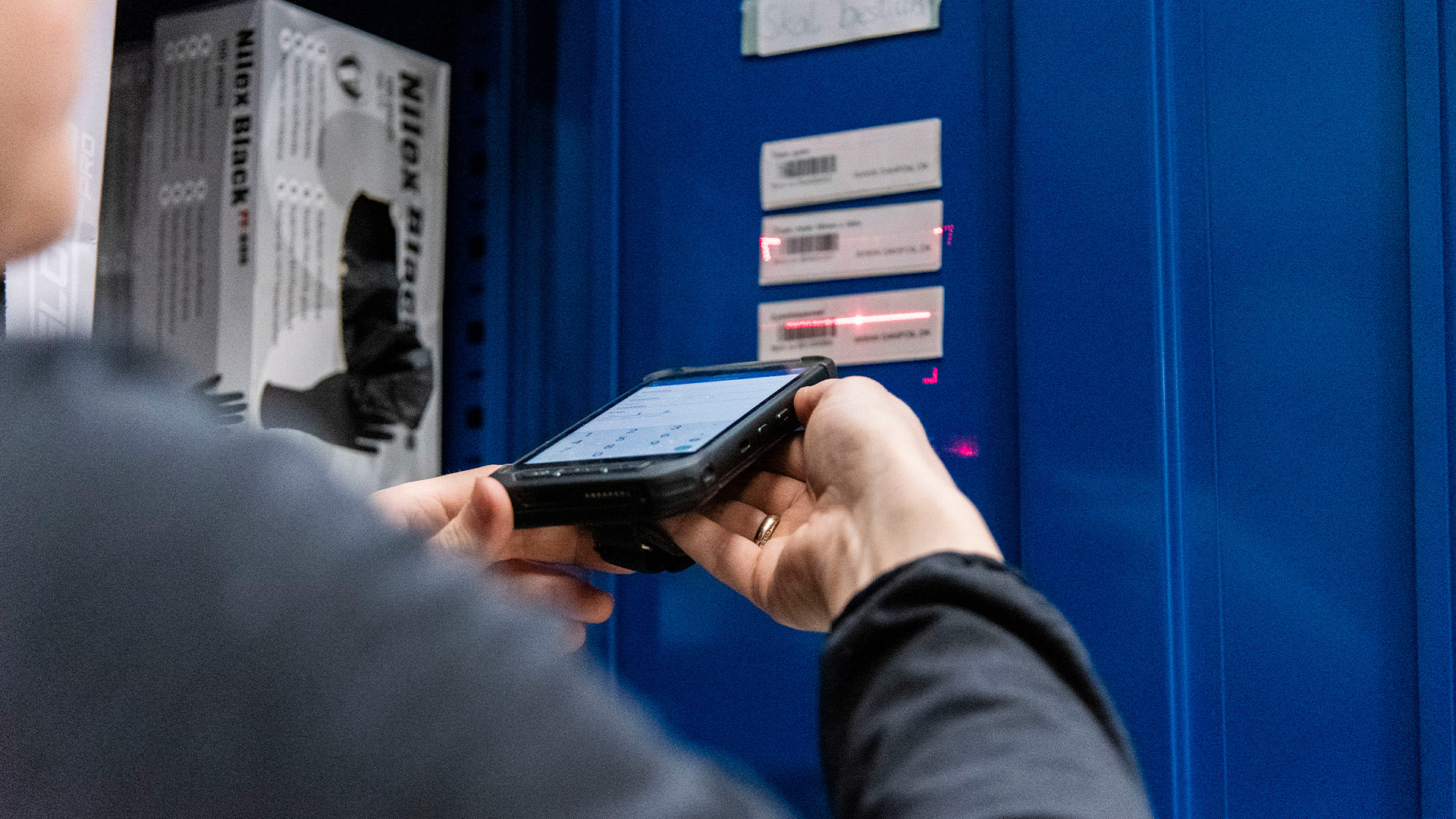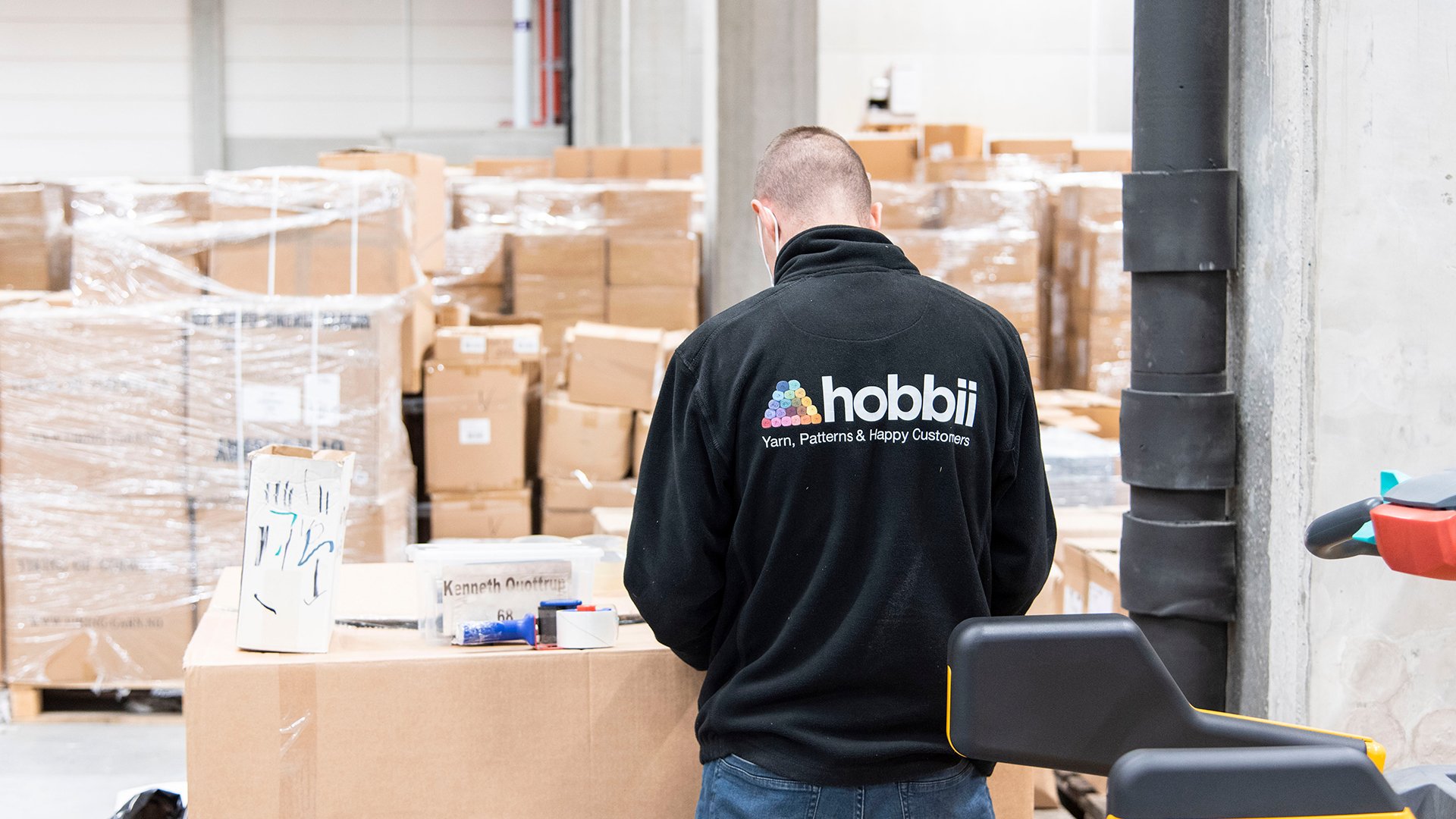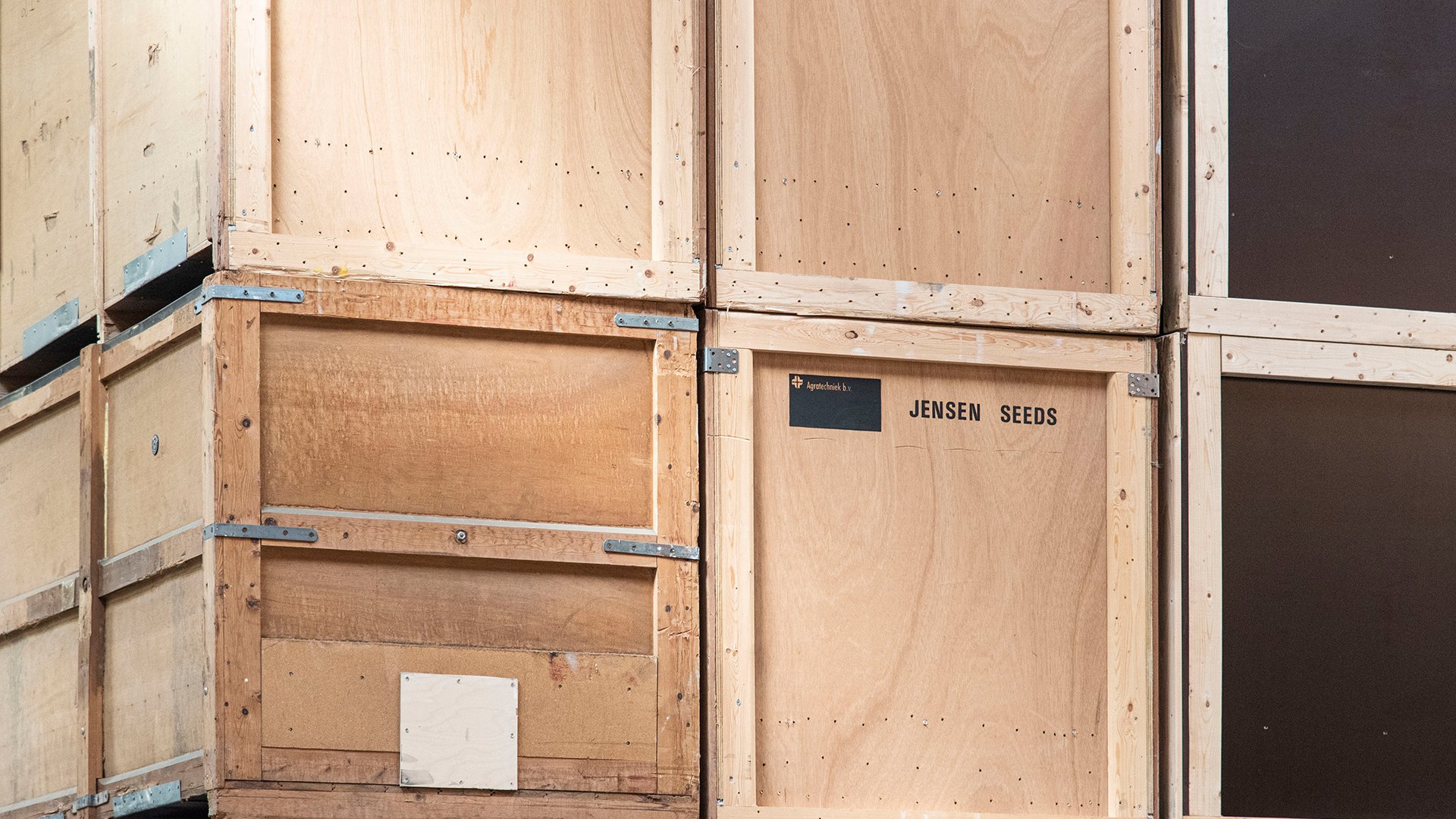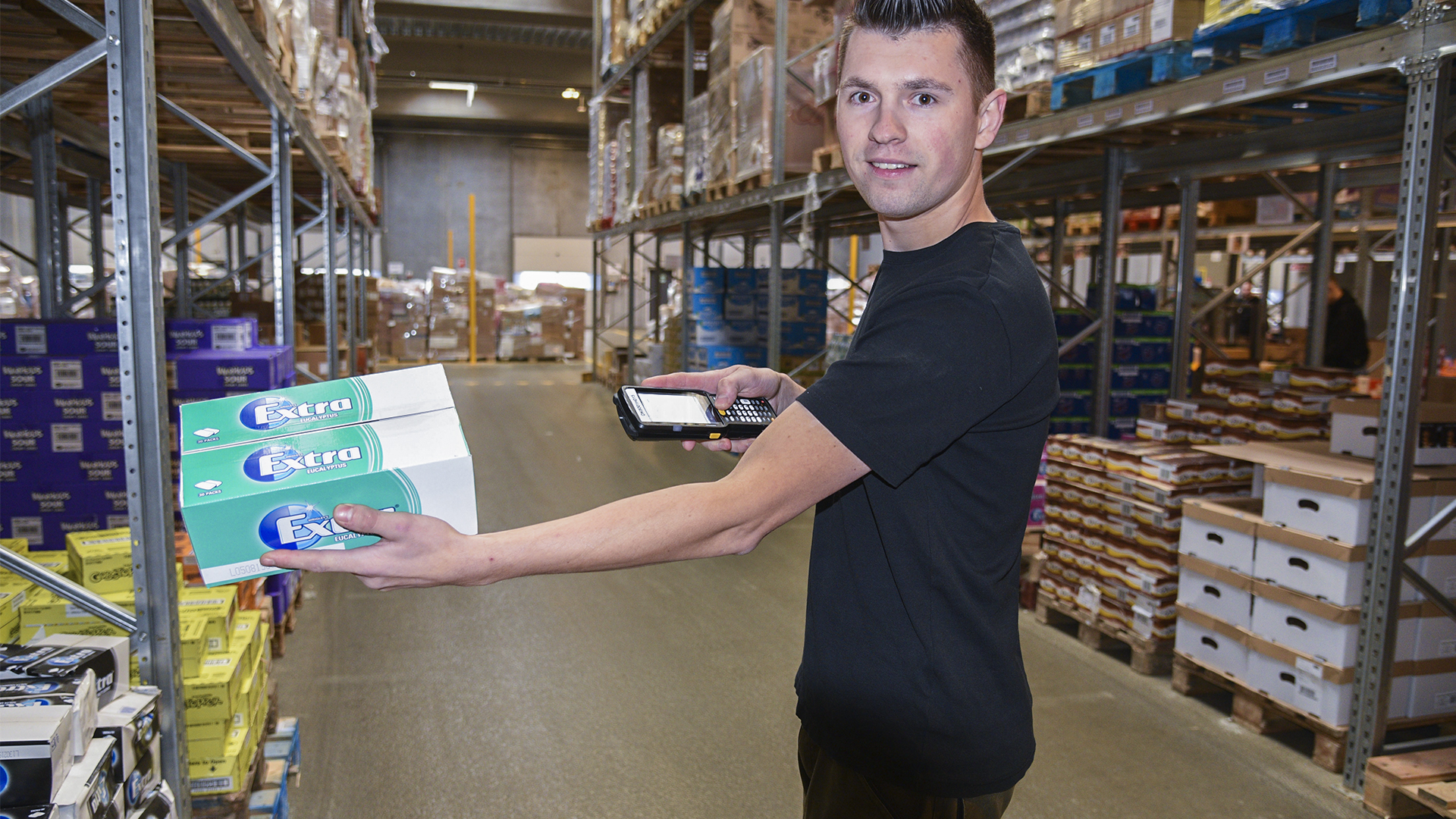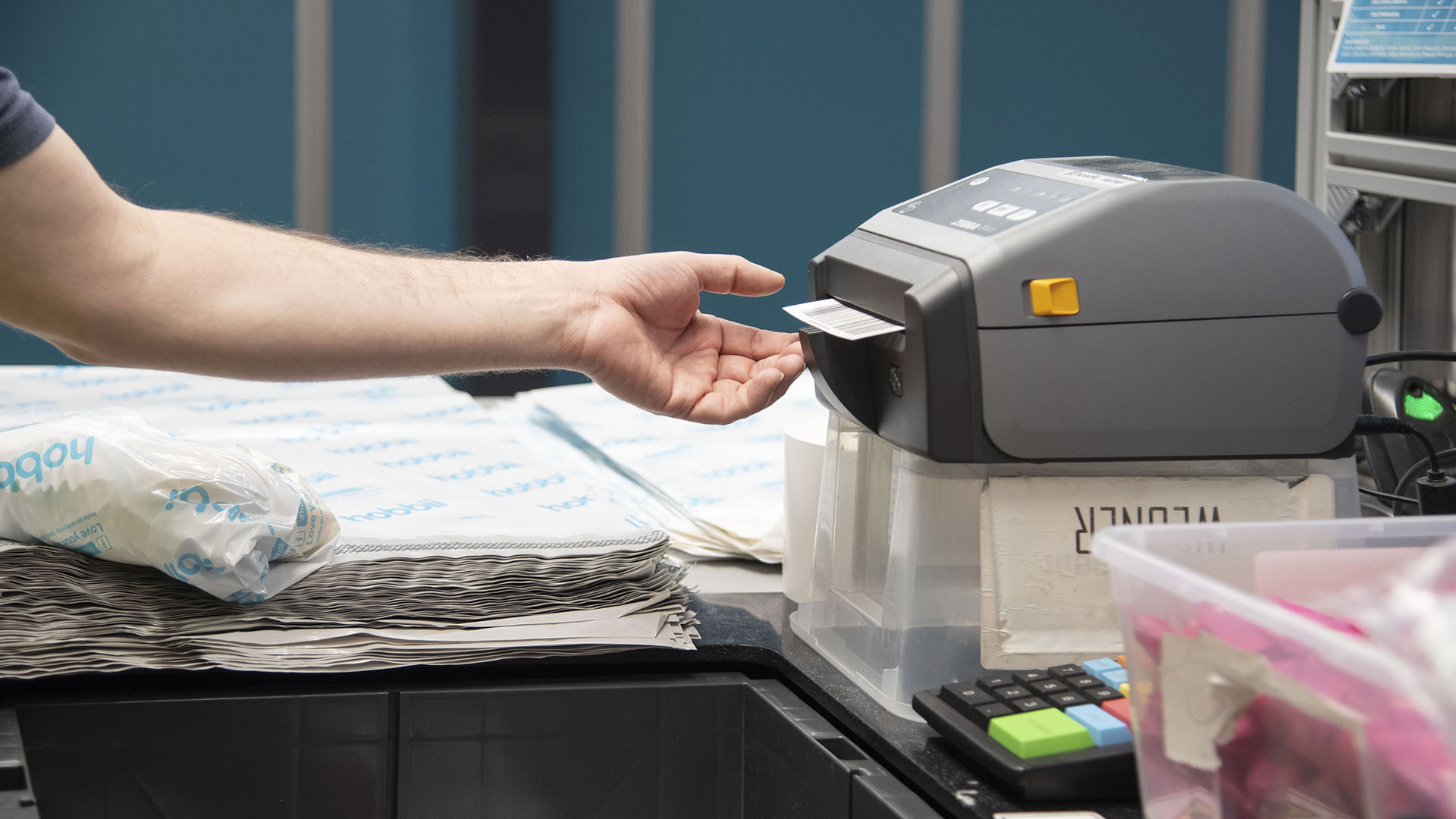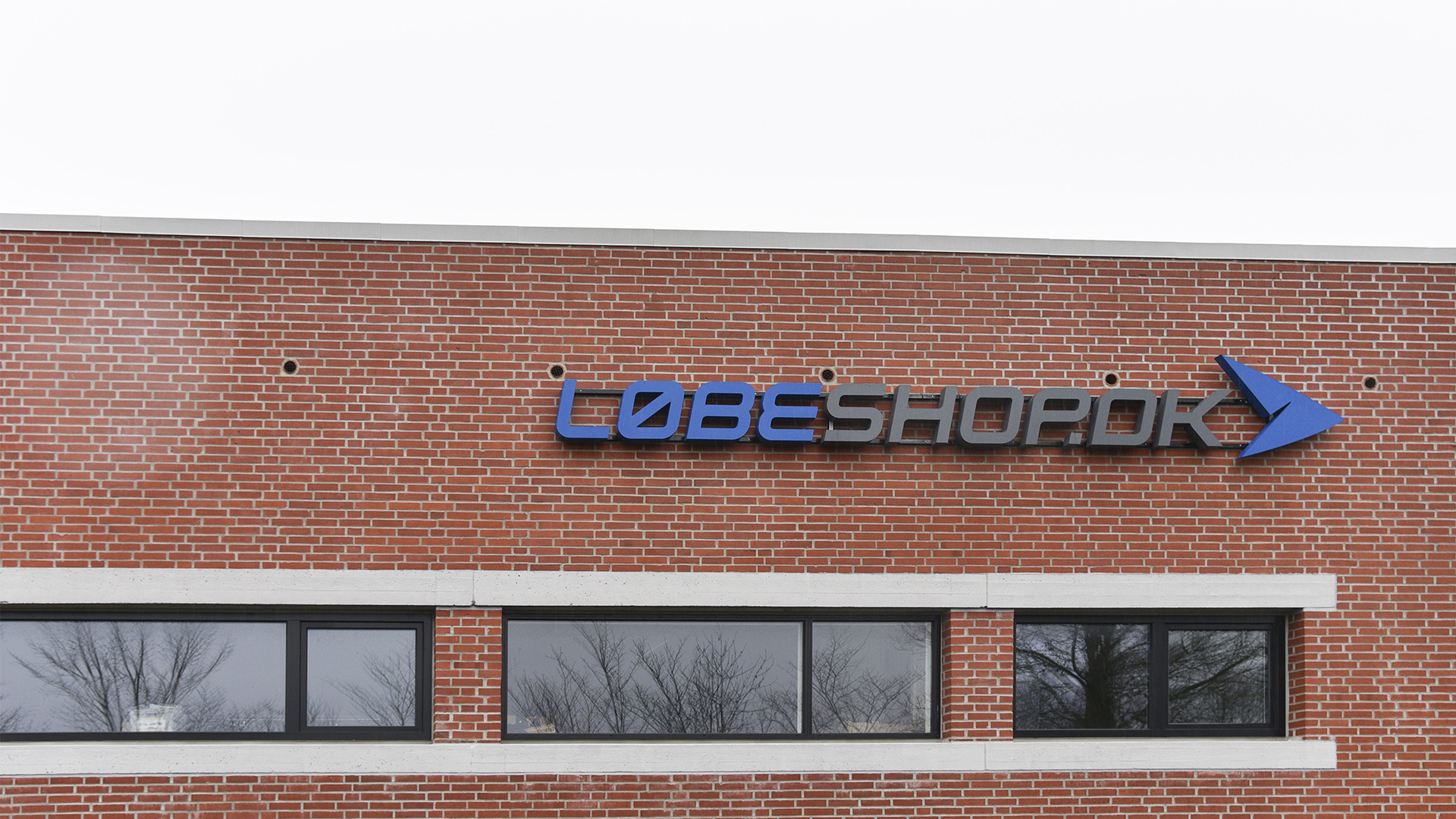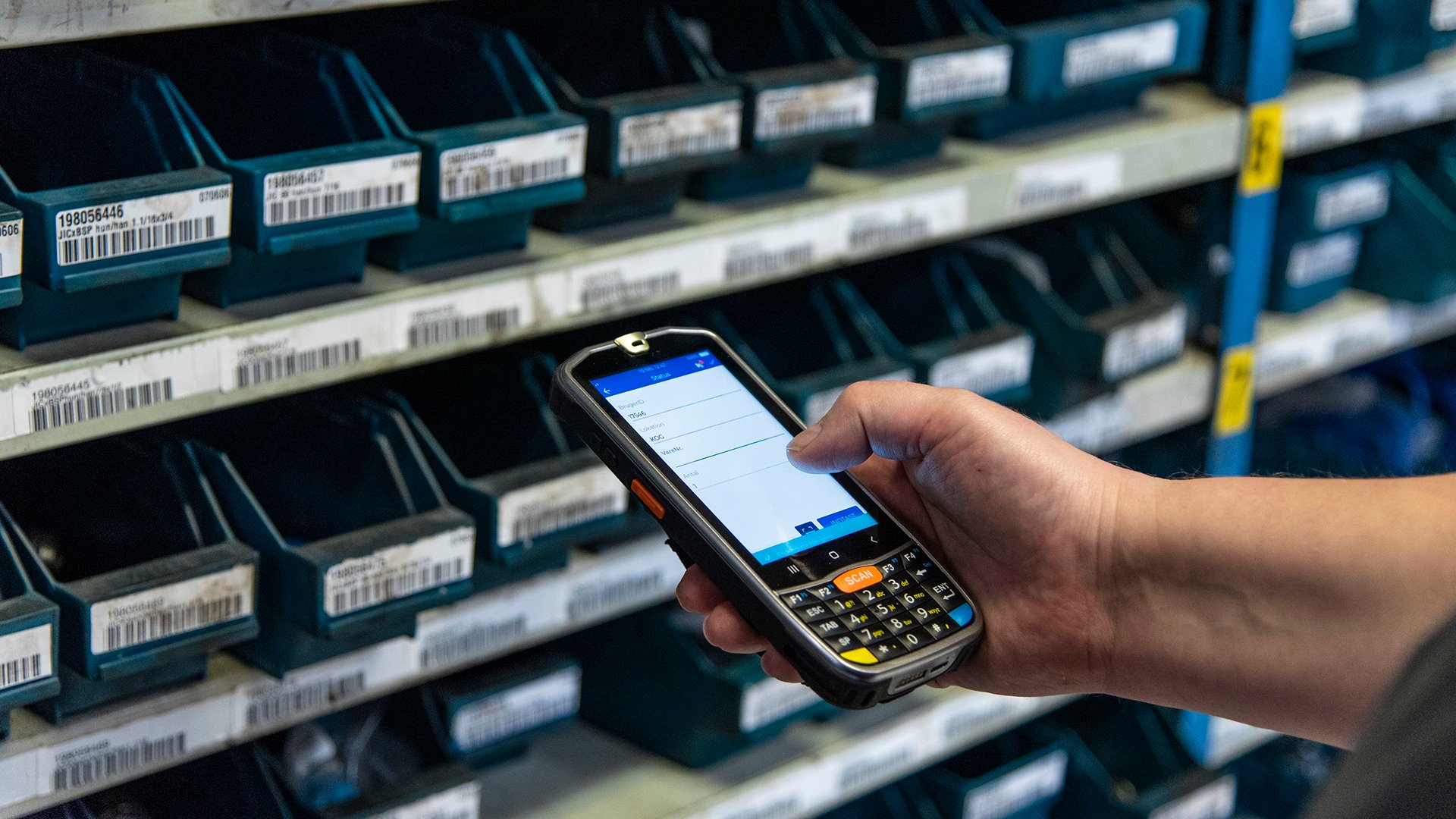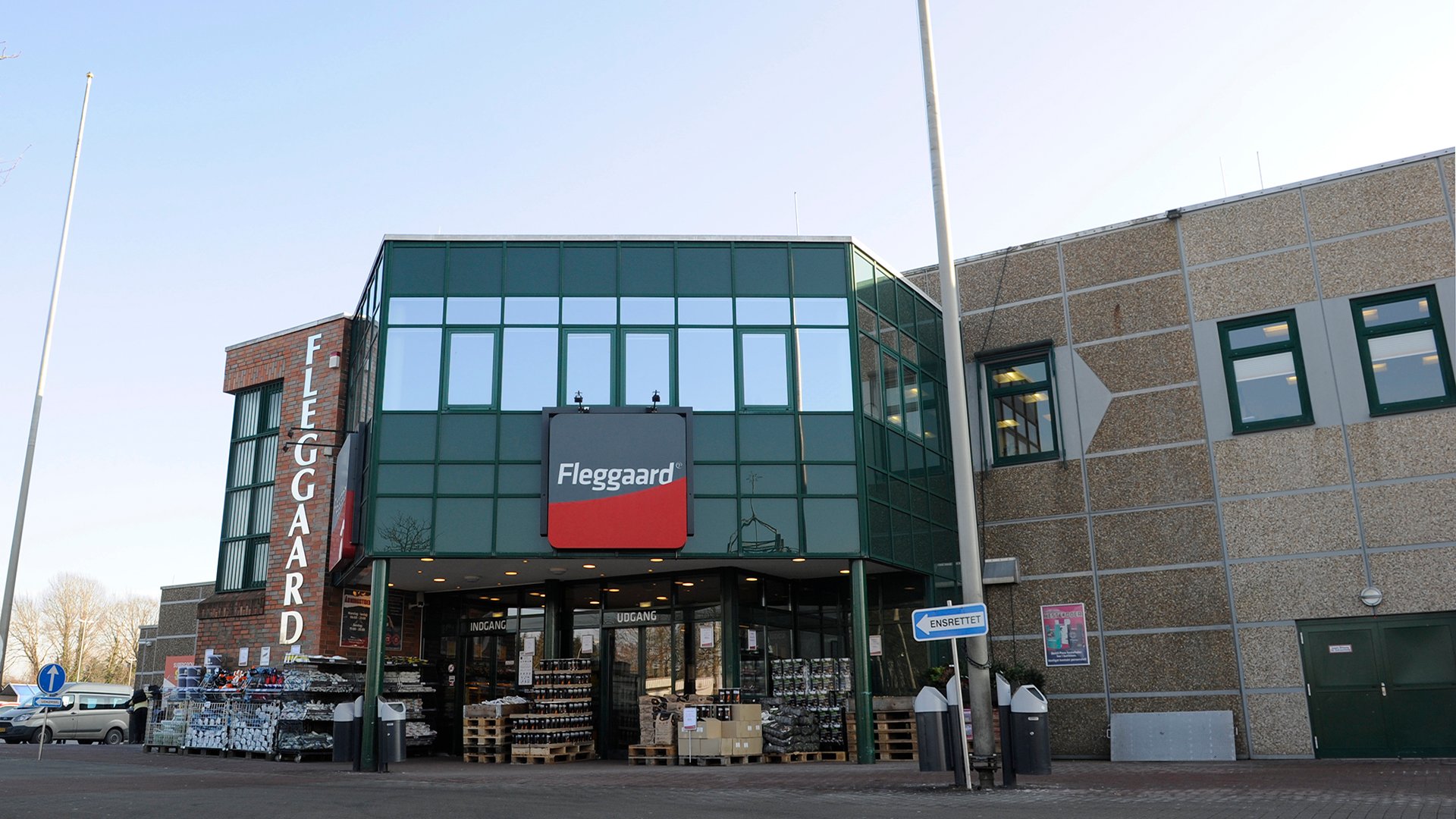DELFI TECHNOLOGIES - DENMARK
A taste of our own medicine with our warehouse system for better planning and fewer errors
Delfi Technologies’ own warehouse system has made the flow of goods at the company much more transparent. The large screen display at the warehouse provides an overview of daily goods flow. Warehouse staff can follow the order process from incoming goods until goods dispatch. The overview makes daily planning much more efficient and the number of errors has fallen dramatically.
In mid-2014, Jackie Cortez, leader of Delfi Technologies’ purchases and logistics department, reported on the new warehouse system, named “Delfi Mobile Force”, in Delfi Posten. Reducing the number of errors and eliminating printed picking notes and manual work processes were then the most revolutionary aspects of the new system. The system’s large screen display has since attracted overwhelmingly positive attention.
THE FLOW OF GOODS
The screen is subdivided into five columns that classify the flow of goods. The columns show incoming goods, orders waiting, order picking, order dispatch and order invoicing. Warehouse staff use the screen to follow the daily flow of goods, plan their work and also as a check list.
“The screen clearly shows us how far we have progressed with the day’s work. When we scan a product using the hand-held terminal, the goods/order number moves automatically from one process to the next, e.g. from picking to dispatch. The warehouse system is fully integrated with C5, our financial management system, so the details I read on the screen are correct and I can plan in accordance with them,” explains Jesper Slott Andreasen, warehouseman at Delfi Technologies’ main warehouse in Køge (Denmark).
"The warehouse system is fully integrated with C5, our financial management system, so the details I read on the screen are correct and I can plan in accordance with them."
FEWER PICKING ERRORS AND MORE TIME
Warehouse staff soon noticed a dramatic fall in the number of picking errors. They believe two factors help to improve efficiency. Not only does the software system consistently update the flow of goods, but the large screen display also frees time to focus on the task in hand.
“The system tracks the progress of each individual order. We can focus on the order we are working on here and now, simply because we don’t have to remember all the others. The system remembers them for us. I can see all the incoming orders on the screen. This means that, at a very early stage, I can see if I need to call in extra manning to clear an upcoming wave of orders,” explains Jesper, who is very pleased to see all the benefits the warehouse system has provided.
The accounts department is delighted that picking errors have vanished entirely because, from a financial perspective, errors are costly and time-consuming. An error is irritating for the customer and causes hassle for the employees who have to unravel the knots at the warehouse: all in all, an unnecessary and costly process.
“Handling picking errors is very costly. We issue a credit note, we spend time finding the error, the customer has to take the time to return the goods sent by mistake, we create a new order and we dispatch the correct goods. Since we implemented the new warehouse system, picking errors have more or less disappeared and we can see the effect clearly on the logistics budget’s bottom line,” says Lykke Frandsen, who is Administration Manager at Delfi Technologies. She has the key to most of the cash.
EASY STOCK COUNTING
In the past, stock counting was an onerous process, which used to cost much head-scratching and many hours of work. Stock counting has become considerably easier with the new warehouse system. The annual stock count took place in June. As in the previous two years, things went really well and stock differences were negligible.
“With the new system, stock counting is almost effortless because we have very precise stock figures. We allocate five employees to count. We start at 8 am and finish by around 8 pm. In June this year, we started at 8 in the morning but this time we were finished by 4 pm. It’s easy to calculate that we saved 20 man-hours: four hours per man times five employees,” explains Martin, who also works at the warehouse.
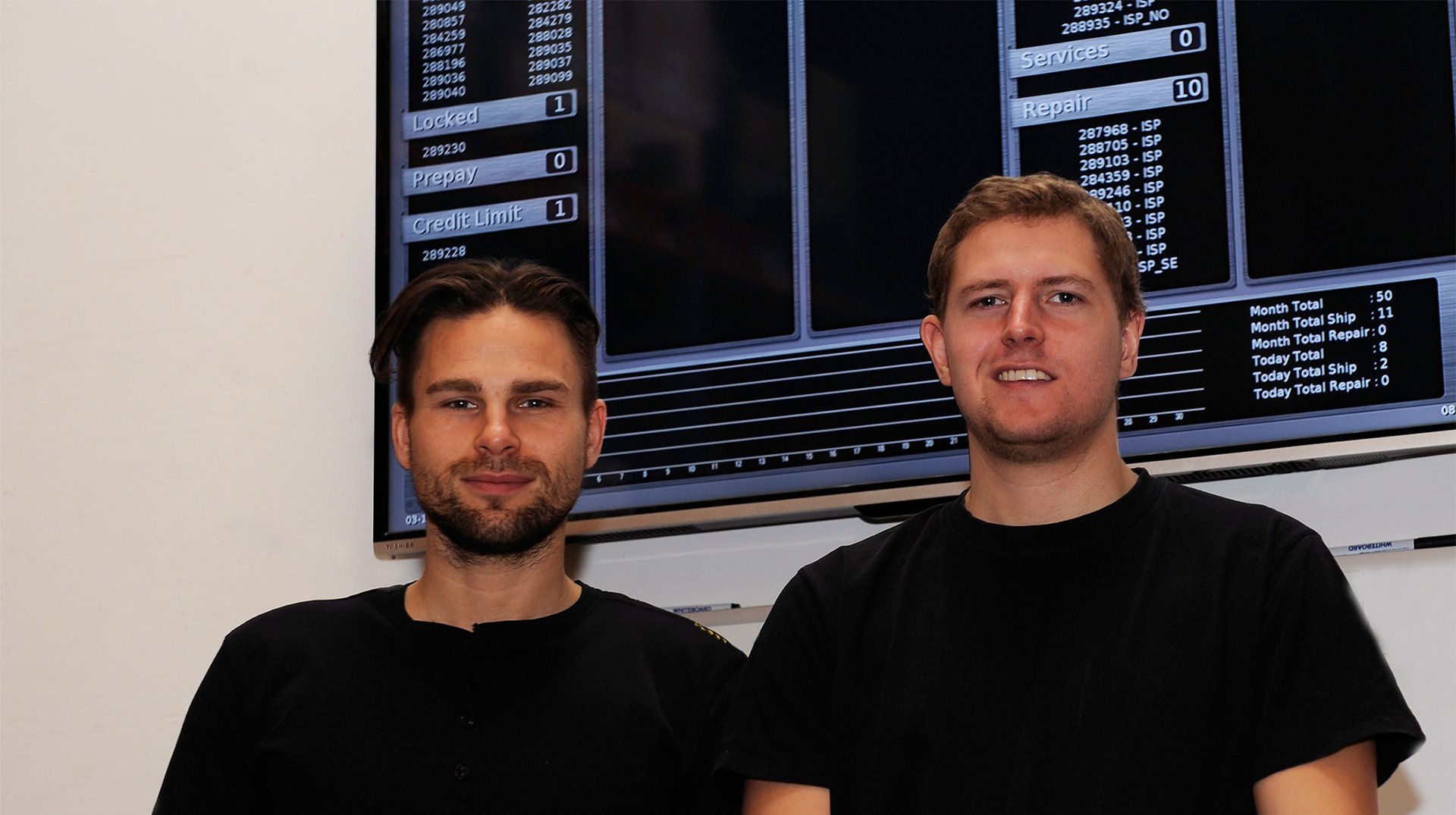
WAREHOUSE SYSTEM SAVES MONEY
“Under the old warehouse system, we would have had to hire more people to cope with the extra flow. The new, more efficient warehouse system means that two experienced warehousemen are sufficient to process the additional order flow. The savings are actually much larger than we had anticipated,” says a very satisfied Administration Manager, Lykke Frandsen.
Contact us
Go to contact for other ways to contact us.

